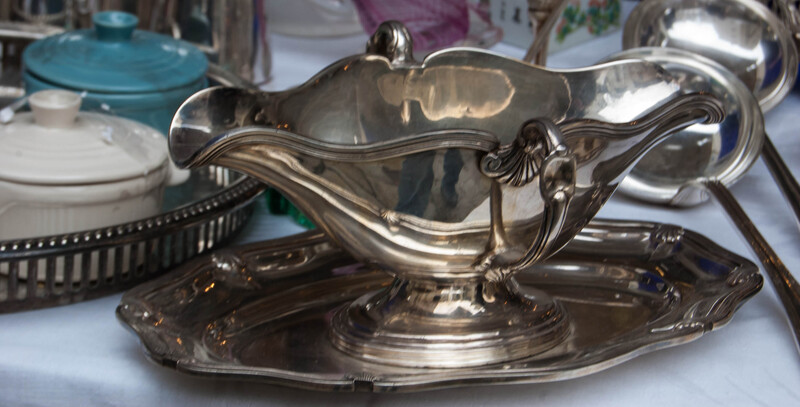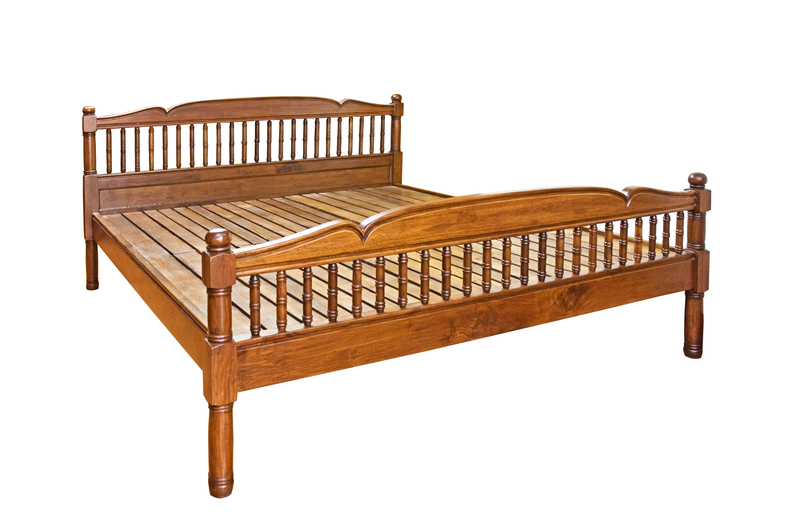How to Keep Pots and Pans Out of Landfills: A Comprehensive Guide
Pots and pans are kitchen staples that serve us for years, but eventually, they wear out or get replaced. Unfortunately, millions of these cookware items are tossed out annually, contributing significantly to landfill waste. Keeping pots and pans out of landfills not only supports environmental sustainability but also opens up opportunities for creativity, charitable giving, and smart home organization. In this extensive guide, you'll discover various methods for recycling, repurposing, donating, and properly disposing of old cookware, ensuring your impact on the planet remains minimal.
Why Should You Avoid Throwing Pots and Pans in the Trash?
Understanding why discarding pots and pans irresponsibly is problematic is the first step toward making better choices. Kitchenware such as frying pans, saucepans, and pressure cookers often contain metals (aluminum, steel, cast iron, copper), synthetic handles, and coatings (such as Teflon or ceramic) that are not biodegradable. When these materials end up in landfills, they can:
- Take decades or even centuries to decompose
- Leach chemicals and heavy metals into the soil and water sources
- Waste valuable resources that could be reused or recycled
Keeping cookware out of landfills plays a crucial role in waste reduction, resource conservation, and pollution prevention.

1. Can Pots and Pans Be Recycled?
Identifying Recyclable Cookware
Not all pots and pans can be recycled the same way. Whether your cookware is made of stainless steel, cast iron, aluminum, or copper, recycling old pots and pans is possible, but you must follow certain guidelines. In most municipalities, curbside recycling programs do not accept mixed-materials cookware because of plastic handles, nonstick coatings, or attached glass lids. However, scrap metal collectors and recycling centers often welcome metal-based pots and pans.
Steps to Recycle Old Cookware
- Call Your Local Recycling Center: Confirm if they accept metal pots and pans and whether you need to remove non-metal pieces. You can usually find this information on their website or by phone.
- Remove Non-Metal Parts: Take off plastic, bakelite, or wooden handles using a screwdriver. Discard non-recyclable parts appropriately.
- Dispose of Nonstick Coatings Properly: Pans with Teflon or ceramic coatings may be rejected by some recyclers. Double-check their policies or ask for guidance on alternative disposal options.
- Drop Off at a Scrap Metal Yard: If your recycling program doesn't take pots and pans, look for local scrap metal buyers. These facilities often melt down the metal for industrial recycling.
Tip: For cast iron pans, some specialty recyclers and even blacksmiths can reclaim the metal for reuse.
2. How to Donate Gently Used Pots and Pans
Donating is a fantastic method for diverting cookware from landfills and helping people in need. Many individuals and organizations are grateful to receive gently used kitchenware, especially if it's still functional.
Key Donation Options
- Thrift Stores: Chains like Goodwill, Salvation Army, and Habitat for Humanity ReStores accept clean, usable pots and pans.
- Local Charities and Shelters: Food pantries, homeless shelters, and domestic violence refuges frequently need kitchen supplies.
- College Student Centers: Students moving into their first apartments often rely on donations of kitchen basics.
- Online Giveaways: Use platforms like Freecycle, Facebook Marketplace, or Buy Nothing groups to give cookware directly to neighbors.
Important: Only donate items in good, clean condition. Chips, cracks, or peeling coatings can be unsafe for recipients.
3. Repurpose Old Pots and Pans Around the Home
Reusing your old cookware in creative and functional ways is perhaps the most fulfilling path. Repurposing keeps pans out of the landfill and reduces demand for new products.
Creative Repurposing Ideas for Old Cookware
- Planters and Garden Decor: Turn saucepans or Dutch ovens into rustic plant pots. Drill a drainage hole if needed, add soil, and watch your herbs or flowers thrive.
- Organizers: Use skillets and shallow pans as organizers for nuts, bolts, craft supplies, or office accessories in the garage or workspace.
- Bird Feeders or Baths: Hang an old wok or large pan with chains to create a unique birdseed station or water bath for wildlife.
- Kitchen Wall Art: Clean and decorate old pans, then display them as vintage or decorative wall art in your kitchen.
- Upcycled Clocks: With a simple clock kit and some creativity, transform a frying pan or saucepan lid into a functional wall clock.
- Candle Holders or Fire Pits: Use heavy cast iron pans to safely house candles for outdoor ambiance or small, contained backyard fires.
Remember, when you repurpose, you not only keep pots and pans out of landfills but also add unique character to your home.
4. Sell or Trade Used Cookware
If your old pots and pans still have life in them, why not earn a little cash? Selling or trading cookware extends its life cycle and benefits new users.
- Online Marketplaces: Try eBay, Craigslist, OfferUp, or Facebook Marketplace to find buyers for secondhand cookware sets, especially name-brand or vintage items.
- Local Flea Markets or Garage Sales: Display your unwanted pots and pans for neighbors to purchase or barter.
- Secondhand Kitchen Shops: Some cookware boutiques and used appliance shops buy or consign quality pans and pots.
Tip: Clean pans thoroughly and note any wear and tear in your listings to ensure transparency with buyers.
5. Contact the Manufacturer for Take-Back or Recycling Programs
As part of an increasing commitment to sustainability, some cookware brands now offer recycling or take-back programs for their products.
- GreenPan, All-Clad, and Calphalon: Have been known to offer mail-back recycling for certain product lines. Check your brand's website for current policies.
- Specialty Retailers: Big-box stores like Bed Bath & Beyond may occasionally run exchange or recycling events for cookware.
Participating in manufacturer programs ensures cookware is processed correctly--recovering metals and responsibly handling hazardous coatings.
6. Properly Dispose of Non-Recyclable Pots and Pans
Some cookware, notably those with damaged nonstick coatings or fused materials, simply cannot be recycled or reused. But you can still minimize the environmental impact:
Best Practices for Responsible Disposal
- Hazardous Waste Facilities: If nonstick coatings are peeling or suspected to contain harmful substances like PFOA, dispose of them at hazardous waste drop-off points.
- Municipal Special Collection Days: Many cities organize bulk collection dates for oversized or mixed-material items to ensure correct handling.
- Document the Item: Label pans "unusable" to prevent trash pickers from taking unsafe cookware for further use.
Never burn or incinerate nonstick pans: this releases toxic fumes that can harm health and the environment.
7. Tips for Extending the Life of Your Cookware
The best way to reduce waste is by making your pots and pans last as long as possible. Here are expert tips for maximizing their lifespan:
- Follow Care Instructions: Hand-wash when recommended, avoid abrasive scrubbers, and season cast iron pans regularly.
- Use Nonmetal Utensils: Wooden, silicone, or plastic utensils prevent scratches in nonstick cookware.
- Store Properly: Use pan protectors, hang pans, or stack carefully to avoid dents and chips.
- Inspect Handles/Covers: Tighten or replace loose screws and handles to maintain safety and functionality.
- Resurface or Recoat: Some nonstick cookware brands offer recoating services for high-quality pans.
By prolonging the useful life of your cookware, you drastically reduce the frequency at which you need to dispose of them, keeping more pots and pans out of landfills.
8. Engage in Community Cookware Swaps
Community swaps are a zero-waste alternative to buying or trashing kitchen tools. Hosting or joining a cookware exchange ensures that underutilized pots and pans become someone else's treasure.
How to Organize a Cookware Swap
- Invite neighbors, friends, or community members to bring unwanted kitchenware.
- Set up a table at a local park, church, or community center.
- Encourage fair trades--swap gently used items for others of similar value.
- Donate any leftovers to charity.
Participating in or organizing a cookware swap is a fun and ethical way to contribute to a circular economy and reduce kitchen waste.

9. Spreading Awareness and Inspiring Others
If you've made steps to keep your pots and pans out of landfills, share your efforts with friends, family, or on social media. The more the message spreads, the bigger the impact on collective sustainability. Consider partnering with local environmental organizations to host recycling drives, upcycling workshops, or educational events focused on waste reduction.
Conclusion: Small Steps Lead to Significant Impact
To keep pots and pans out of landfills is to invest in a healthier, cleaner planet and stronger communities. Whether you recycle, donate, repurpose, or simply extend the life of your kitchenware, every action counts. If every household made conscious choices about how to dispose of old pots and pans, the cumulative effect would be profound.
Key takeaways:
- Check local recycling options for metal-based cookware.
- Donate usable pots and pans to those in need.
- Repurpose cookware in creative ways around the home or garden.
- Use upcycling, selling, or trading to extend their life cycle.
- Dispose of non-recyclable items responsibly.
- Keep educating others on sustainable disposal practices.
By following these suggestions, we can all play a role in reducing landfill waste, conserving resources, and building a more sustainable future--one pot and pan at a time.
